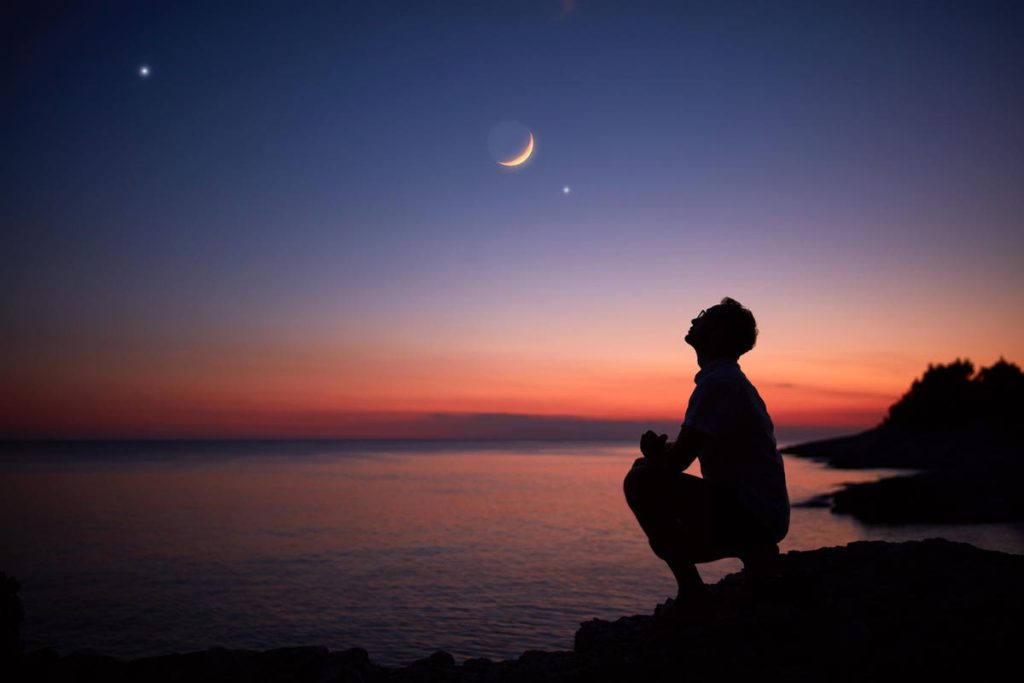Each Monday I pick out the northern hemisphere’s celestial highlights (mid-northern latitudes) for the week ahead, but be sure to check my main feed for more in-depth articles on stargazing, astronomy, eclipses and more.
The Night Sky This Week: June 12-18, 2023
Venus has been a bright presence in the west in the early evening sky for most of 2023, but that’s about to end as it retreats to a crescent and ultimately disappears into the sun’s glare during July. Before that, it will take a trip close to the Beehive cluster, one of the prettiest open clusters of stars in the spring sky in the northern hemisphere. Meanwhile, early risers will get some lovely views of a crescent moon this week, including one with the night sky’s other brilliant open cluster, the Pleiades.
However, with a New Moon this week it’s a wonderful week to go stargazing at night with the Milky Way in prime position—if you can stay up late enough for true darkness. After all, the solstice—the longest day and shortest night of the year in the northern hemisphere—is coming next week! How do we know this? The Pleiades star cluster is now visible in the east just before sunrise … calendars are sure helpful, but the positions of stars have for thousands of years marked the passing of time and the beginning of seasons.
Tuesday, June 13: Venus And The Beehive Cluster
Just a few weeks after Mars’ appearance in M44, Venus has a turn. The still-bright “Evening Star” planet will make a close pass of the Beehive Cluster (M44) in the constellation Cancer. You will be able to see it with the naked eye, though any pair of binoculars will get you a superior look at M44’s blue stars. Mars will be just above.
Wednesday, June 14: A Waning Crescent Moon And Jupiter
If you’re up around 04:00 a.m. have a look to the east to see a 15%-lit waning crescent moon just 2º from Jupiter, which is now a morning object—and will be until late summer.
Thursday, June 15: A Waning Crescent Moon And Uranus
Just after 04:00 a.m. in the east-northeast pre-dawn sky Will be an 8% illuminated waning crescent moon between Jupiter to its upper right and the Pleiades to its lower left. However, on the lower right, the moon will be the planet Uranus. However, to see it you will likely need binoculars.
Friday, June 16: A Young Crescent Moon And The Pleiades
Another early start will get you views about 04:30 a.m. of a by now just 3%-lit crescent moon rising in the east-northeast just below the Pleiades open cluster of sparkling blue stars, the appearance of which is a clue that the solstice is close.
Saturday, June 17: Saturn Retrograde
From today through November 4, Saturn will be in a period of apparent retrograde motion” while in the constellation Pisces—appearing to go backward in the sky. Earth is orbiting the Sun much faster than the outer planets, so occasionally overtakes them. They then appear to be moving backward for a short time.
Sunday, June 18: New Moon
A new moon occurs when our satellite is roughly between us and the Sun. Is therefore completely invisible, which is a shame because it’s actually up all day hanging around in the glare of our star. The only time a new moon is visible is during a solar eclipse, but even then you can only see it as a data sheet across the sun’s disc.
Object Of The Week: The Milky Way
Summer is the best time to see the Milky Way from the northern hemisphere, but conditions have to be perfect. You’ll need a very dark sky, which means getting as far as you can from urban lights. The best time to try is the week before (and a few nights after) the New Moon, which occurs on June 18 this month. However, you will have to stay up late—it won’t get properly dark until at least midnight. The New Moons in July and particularly August and September will be the best times to try for the summer Milky Way if you live at far northern latitudes.
Times and dates given apply to mid-northern latitudes. For the most accurate location-specific information consult online planetariums like Stellarium and The Sky Live. Check planet-rise/planet-set, sunrise/sunset and moonrise/moonset times for where you are.
Wishing you clear skies and wide eyes.
Read the full article here










